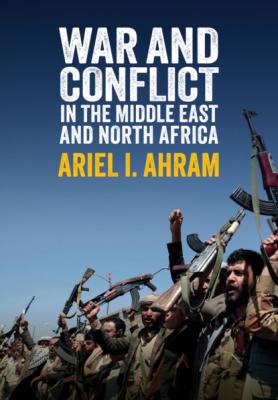War and Conflict in the Middle East and North Africa. Ariel I. Ahram
Читать онлайн.| Название | War and Conflict in the Middle East and North Africa |
|---|---|
| Автор произведения | Ariel I. Ahram |
| Жанр | Зарубежная публицистика |
| Серия | |
| Издательство | Зарубежная публицистика |
| Год выпуска | 0 |
| isbn | 9781509532841 |
state-based conflict, where at least one of the parties is the government of a state, that is, violence between two states and violence between the government and a rebel group;
non-state conflict, which involves two organized groups, such as rebel groups or ethnic groups, neither of which is the government of a state; and
one-sided violence, where the government of a state or a formally organized group commits violence against unarmed civilians.
Table 1.2 breaks down the violence of MENA by type. In Syria, Iraq, Sudan, and Yemen, the vast majority of the violence has involved state actors as perpetrators or targets. The violence of non-state conflicts – where states are absent – is certainly present but pales in comparison.
It is useful at this point to step back to consider the role of terrorism in MENA’s wars. Terrorism is, by definition, a non-state activity. The Global Terrorism Database (GTD), developed by the National Consortium for the Study of Terrorism and Response to Terrorism at the University of Maryland, offers perhaps the most rigorous method for defining terrorist events.33 The GTD defines acts of terrorism as acts involving “the threatened or actual use of illegal force and violence by a non-state actor to attain a political, economic, religious, or social goal through fear, coercion, or intimidation.” Terrorist acts must be intentional, entail violence or the immediate threat of violence, and the perpetrators must be non-state actors.34 Several points become clear in analyzing the GTD data. Since the 1970s, terrorism has been a global phenomenon in no way limited to MENA. Within MENA, Algeria, Egypt, Yemen, Israel/Palestine, Iraq, and Syria have especially high levels of terrorist influence. But there are many other hotspots outside the region, including in Colombia, Peru, Central America, Afghanistan, India, Pakistan, Somalia, Nigeria, and the Philippines. Moreover, when considered by fatalities, terrorist acts account for only a small scale of the overall violence in MENA. The data from 2018, for instance, list Iraq as having the second highest number of terrorist attacks, as shown in Table 1.3. But this is only a small portion of Iraq’s total battle deaths.
Table 1.2 State, non-state, and one-sided violence in MENA, 1989–2017
Source: Pettersson and Eck, “Organized Violence, 1989–2017.”
Terrorism is closely correlated with asymmetrical internal wars, but it is far from the most consequential form of violence. While much of the United States and other world powers exhibit concern about terrorist attacks emanating from the Middle East, terrorism is hardly a peculiar characteristic of the region.
Internal war and terrorism often stem from states’ inability to control violence effectively. This is not the same, though, as to say that states are somehow exempt from or uninvolved in such violence. In his study of war and conflict in Africa, Paul Williams argues that a state-centric perspective on Africa’s conflicts would be inadequate and inappropriate “because many of the continent’s armed conflicts take place on the peripheries of, or outside, the African society of states and do not involve government soldiers.”35 In MENA, by contrast, the exact opposite prevails. Even when violence is conducted by non-state actors, it is largely oriented toward winning control over states or establishing alternative political structures, that is, new states.
Table 1.3 Ten countries with the most terrorist events in 2018
Source: Global Terrorism Database, available at https://www.start.umd.edu/data-tools/global-terrorism-database-gtd.
| Country | No. of events (% of global total) |
|---|---|
| Afghanistan | 1,776 (18) |
| Iraq | 1,362 (14) |
| India | 888 (9) |
| Nigeria | 645 (7) |
| Philippines | 601 (6) |
| Somalia | 527 (5) |
| Pakistan | 480 (5) |
| Yemen | 325 (5) |
| Cameroon | 235 (2) |
| Syria | 232 (2) |
Conclusion
Counting armed conflicts, battle deaths, and indirect deaths is frustratingly inexact. The exercise depends on disputed concepts that, in turn, link to deeper normative concerns about what types of violence are legitimate versus illegitimate. Terms like “soldier,” “terrorist,” “civilian,” “victim,” or “casualty” connote different statuses within organizations devoted to fighting. Even if these theoretical and moral issues are resolved, the techniques used to collect data about war themselves face
